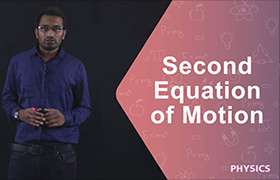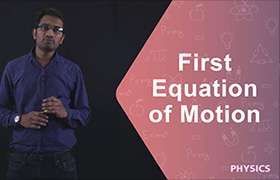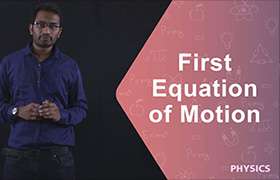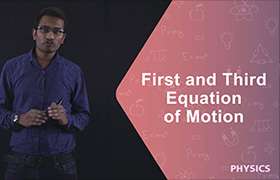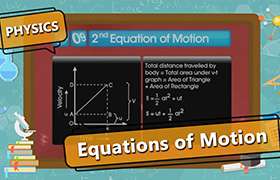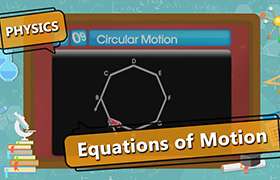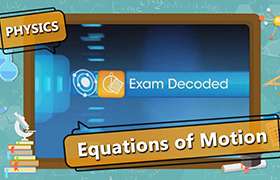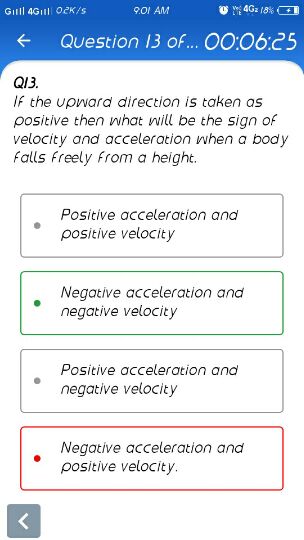CBSE Class 9 Answered
A train starts from a station P with a uniform acceleration a1, for some distance and then goes with uniform retardation a2 for some more distance to come to rest at the station Q. The distance between the stations P and Q is 4Km and the train takes 4 minutes to complete this journey, then 1/a1 1/a2=
1/a2=
 1/a2=
1/a2=
Asked by Petulla Mishra | 04 Nov, 2015, 10:10: AM
There are two case in given question:
1. When train moves with uniform acceleration
2. When train moves with uniform retardation.
For the 1st case,
Let the train start from a station P with uniform accleration a1, with initial velocity u1 and t1 be the time when it reaches at some distance s1
From kinematic eqution of motion we have,
v1=u1+a1t1 (u1=0 Initialy at rest)
v1=a1t1 .... (i)

For the 2nd case the final velocity of first interval will be intial velocity of second.
Let a2 be uniform retardation, t2 be the time when it travels a distance s2 and comes to rest .
From kinematic equation of motion we have,
v2 = u2 - a2t2 = v1 - a2t2 (v2 = 0 finaly comes at rest)
v1 = a2t2 ... (iii)

Using kinematic equation of motion,

Answered by Faiza Lambe | 04 Nov, 2015, 11:06: AM
Application Videos
Concept Videos
CBSE 9 - Physics
Asked by janhavisoni2099 | 02 Oct, 2023, 05:20: PM
CBSE 9 - Physics
Asked by sagrawal0081 | 18 Aug, 2023, 05:04: PM
CBSE 9 - Physics
Asked by ketkiparasgandhi | 05 Jul, 2023, 08:02: PM
CBSE 9 - Physics
Asked by adityatripathi84418 | 02 May, 2023, 10:29: PM
CBSE 9 - Physics
Asked by rsaranya658 | 30 Jun, 2022, 02:44: PM
CBSE 9 - Physics
Asked by poornimaram165 | 21 Jun, 2022, 09:16: PM
CBSE 9 - Physics
Asked by saanidhyapatil | 16 Feb, 2022, 01:23: PM
CBSE 9 - Physics
Asked by pradeepkumarbhegde5175 | 12 Jan, 2022, 11:25: PM
CBSE 9 - Physics
Asked by debargharoy057 | 25 Sep, 2021, 09:48: AM

